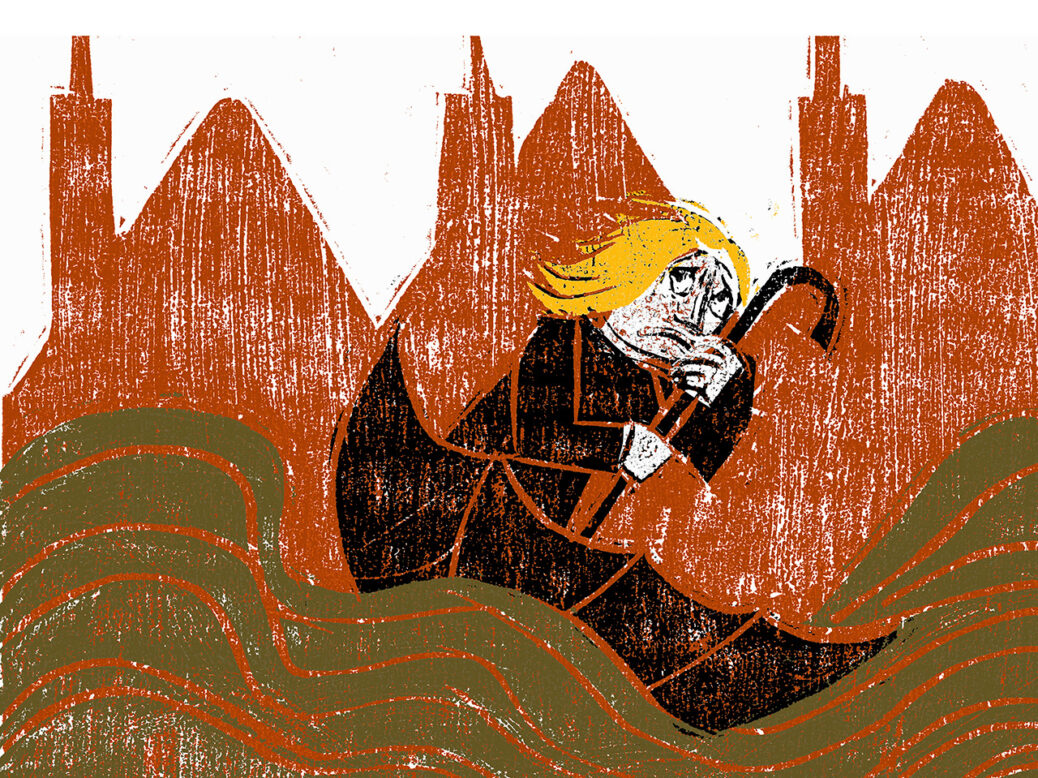
In the second quarter of this year Britain’s rentier economy quietly arrived at a turning point: the end of the buy-to-let property market. According to research published by Savills yesterday, there is no longer any profit to be made from buying a home with a typical loan-to-value ratio (meaning a deposit of 30 per cent or less) and renting it out to someone else. For the first time since 2007, mortgage rates have moved the returns on a typical new buy-to-let into negative territory. The small landlord business is dead.
These buyers were the core of the BTL market. Since 2014, 73 per cent of new buy-to-let mortgages have been taken out by people with a deposit of less than 30 per cent, according to data supplied to me by UK Finance. In the two years to July 2023, more than 163,000 of these leveraged borrowers took out £25bn in new buy-to-let mortgages; none of them, were they taking out the same loan today, would expect to make a profit from doing so.
Small landlords on cheaper rates (or with bigger deposits) will continue to make money, but this means the flow of new landlords into the market will dry up, and as the cheaper fixed-rate periods (often two years) of many landlords end, they will be forced to choose between selling up or becoming a loss-making business.
The small-landlord business has had a transformative effect on Britain’s economy and society. For three decades, buy-to-let mortgages offered small investors the leverage to grow a deposit-sized sum into a house-sized sum, with someone else (a tenant) paying the borrowing costs. This low-skill, low-tax, high-return business became a route to wealthy retirement for millions of people. Millions more became their tenants: by 2021, almost one in five people lived in the private rented sector.
But the most attractive thing about BTL property was that because so many other people were doing it – and so little housing, especially social housing, was being built – the underlying asset (the house) gained value well above the rate of inflation.
Now the market is headed in the opposite direction. Buy-to-let landlords owe £300bn to Britain’s banks, according to UK Finance. This is a huge amount of debt to keep servicing without any incentive to do so. In fact, the incentive is to get out, because persistent high inflation is dissolving the value of landlords’ investments: last week Savills found that the real-terms (inflation-adjusted) value of houses in the UK had dropped 13.4 per cent from its peak in March 2022.
[See also: Here’s how to tackle Britain’s housing crisis]
October is usually the busiest month for housing sales, bringing with it a rise in prices, but this year’s autumn surge is barely a ripple, the weakest growth for the season since 2008, according to this month’s Rightmove house price index. Many landlords will see an urgent need to sell up, and in doing so they will compound falling prices by increasing supply to a market in which new customers (landlords and homebuyers) are drying up, and sellers are increasingly accepting steep discounts.
Some landlords might look at the dip in 2007-8 and conclude that the housing crash, while it may deepen, will be temporary: after all, the average UK house price rose 81 per cent in nominal terms from 2008 to 2022. But the only reason the market recovered after the 2008 crash was that the Bank of England reduced interest rates almost to zero and added £895bn in new money to the economy through quantitative easing. It can persuasively be argued that the growth in house prices in 2008 is almost entirely due to this intervention.
No landlord or estate agent should kid themselves that the Bank will bail out the housing market again. Quite the opposite: the Bank is now embarked on quantitative tightening, and its governor, Andrew Bailey, has repeatedly said that interest rates will need to remain elevated for a sustained period. The fight against inflation is far from over, and the housing market will continue to be one of the casualties.
One of Bailey’s fellow rate-setters, Swati Dhingra, told the BBC last week that only around 20 to 25 per cent of the impact of rate hikes has fed through into the real economy so far. Housing is an early indicator because demand is so dependent on the cost of borrowing, but in the years ahead millions of people will reach the end of their fixed-rate mortgages and find themselves less able to afford their home.
Even in a period of economic recovery, prices may remain subdued if, for example, Labour does manage to stimulate the building of 1.5 million new homes over the next parliament – although house prices are affected by more than just supply. The good news is that rising house prices are an economic fiction, and in terms of housing affordability, a subdued market is generally positive. The bad news is that it’s a fiction on which people have come to rely, as a substitute for pensions and savings. The evaporation of that wealth will have consequences beyond the property market. The house-price winter is just beginning.
Read more:
Why isn’t Keir Starmer afraid of building on the green belt?
Why you should be nice to Nimbys
The real reason Britain can’t build anything





